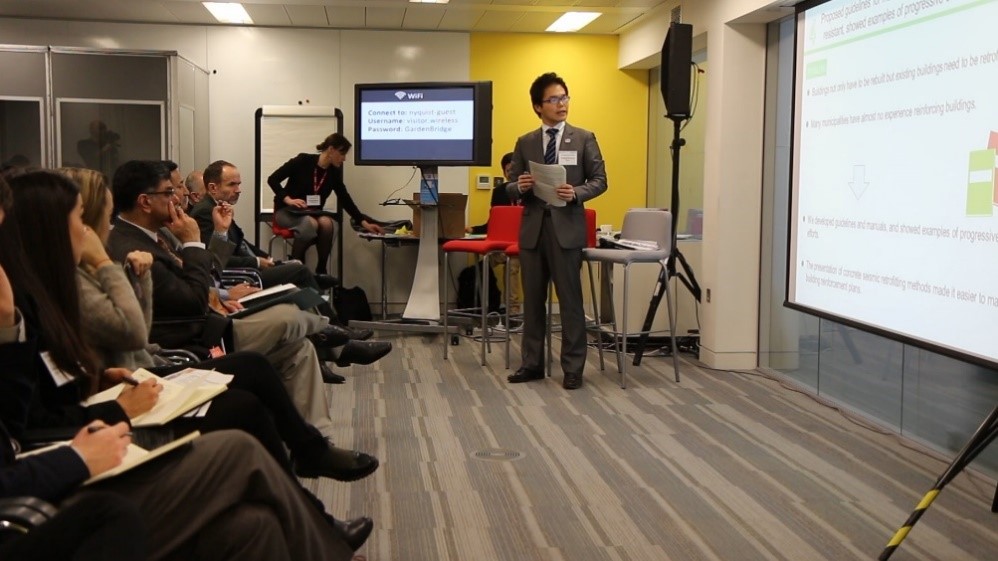Each year, natural disasters have devastating effects on children’s education in developing countries. The 2015 earthquake in Nepal resulted in the collapse of 5,000 schools, damage to 30,000 classrooms, and disruption of education for 1 million children. More recently, Hurricane Matthew in October 2016 damaged over 730 schools in Haiti.
To address this challenge, the Global Facility for Disaster Reduction and Recovery’s (GFDRR) Global Program for Safer Schools (GPSS) aims to make school facilities and the communities they serve more resilient to natural hazards. The program works to reduce the physical impact of disasters on school infrastructure and minimize the negative educational outcomes that result from disasters. Activities supported by the program focus on helping ministries of education avoid the creation of new risks and reduce existing risks through risk-informed construction and retrofitting of school infrastructure.
In this context, GPSS and its partners hosted a two-day workshop, “A Roadmap for Safer Schools,” on January 30-31 in London, United Kingdom. The workshop focused on the integration of risk considerations into education infrastructure, and included five sessions following the steps in the Roadmap: i) Establishing a School Infrastructure Baseline; ii) Understanding the Construction Environment; iii) Understanding the Financial Environment; iv) Disaster Risk Assessments; and v) Safer School Investment Opportunities. The agenda also featured a special session on ensuring safety and quality of schools in post-disaster contexts.
The truly global nature of this challenge was visible at the workshop, as experts from Arup International Development, Applied Technology Council, the World Bank Group, University College London, and University of Los Andes presented case studies from Japan, Nepal, New Zealand, Peru, the United States, and the East and Central Asia region. The event gathered over 50 participants from ministries of education and other ministries involved in school construction and retrofitting, including officials from Armenia, El Salvador, India, Jamaica, Malawi, and Nepal, as well representatives from the OECD Effective Learning Environments and GPSS partners.
Participants in the workshop we able to learn from Japan’s well-established expertise in disaster resilience. During the workshop, Shoichiro Michibata, Subsection Chief from Japan’s Ministry of Education, Culture, Sports, Science and Technology (MEXT), discussed how Japan, one of the most disaster prone countries, financed a large-scale retrofitting program that successfully made school infrastructure more resilient to earthquakes. Tetsuji Kimura, Deputy Director at MEXT, presented on Japan’s experience in addressing the multiple challenges associated to the implementation of large-scale risk reduction programs in the education sector. Kimura’s presentation showcased how the political and technical spheres interacted in Japan to successfully improve the resilience of school infrastructure at a large scale.
These presentations accompanied the launch of a report on the experience of Japan, "Making Schools Resilient at Scale: the Case of Japan." The report, which was developed by GPSS in partnership with the World Bank Tokyo DRM Hub, examines the program implemented by MEXT to improve the structural safety of thousands of schools across the country. Through the Japan-World Bank Program, Japan is now sharing its experience with other countries and financing activities to improve the safety of school infrastructure in Peru, El Salvador, Turkey, and the Philippines.

Presentation by Tetsuji Kimura, Deputy Director at the Office for Disaster Prevention, Department of Facilities Planning and Administration, Ministry of Education, Culture, Sports, Science and Technology of Japan
The GPSS team also released a new publication, “A Roadmap for Safer Schools.” Developed by the GPSS team in collaboration with GFDRR and Arup International Development, the Roadmap aims to help World Bank teams engage with ministries of education, finance, and public works to promote informed investments in the safety of school infrastructure at risk from natural hazards.
“The Roadmap for Safer Schools is a contribution from the GPSS towards the critical need of generating evidence-based arguments to inform the design of vulnerability reduction investment plans for school infrastructure,” said Fernando Ramirez Cortes, Senior Disaster Risk Management Specialist at the World Bank
This workshop was a single but important step in ensuring the safety and resilience of schools and children around the world. The participants left with new insights and, crucially, new connections with stakeholders working on safer schools. Moving forward, countries will be better equipped to identify opportunities to reduce risk as they invest in their children’s future.
Financial support for the Global Program for Safer Schools is provided by the Government of Japan through the Japan-World Bank Program for Mainstreaming DRM in Developing Countries.
